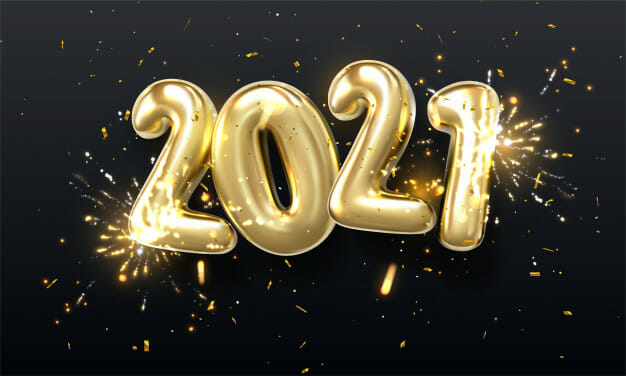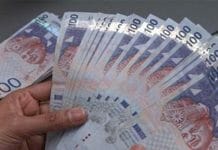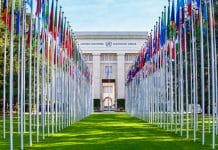By Roshan Thiran, CEO of Leaderonomics
“If you want to know your past, look into your present conditions.
If you want to know your future, look into your present actions.”
A few years ago, I wrote about Goleman, Boyatzis and McKee book Primal Leadership which references “CEO disease” as a major cause of organisational issues and confusion. Basically, the CEO disease is “the information vacuum around a leader created when people withhold important (and sometimes unpleasant) information.”
Lately, we see numerous instances of “CEO Disease” in many organisations, especially in this Covid-19 era, where so many things seem uncertain and unclear. The CEO disease happens when the CEO is in denial of the real state of the business and is not open to criticism or bad news. In the past, this was a norm, where many boards were filled with directors who are never critical of the CEOs performance (and focused more on keeping their board seat).
Today, many CEOs and leaders have significant blind spots and have no clue to them having this disease. But there is a vaccine for this disease. The antidote for this disease: Hyper-awareness
Hyperawareness, not Self-Awareness
“The day soldiers stop bringing you their problems is the day you have stopped leading them,” declared retired 4-star general and former US Secretary of State, Colin Powell. “They have either lost confidence that you can help them or concluded that you do not care.” No one welcomes bad news about themselves, but self-aware leaders not only accept feedback, they even seek it out. They do so because they want to keep learning and growing. Without awareness there is no growth. But that is not hyper-awareness. It’s just the starting point.
As we start 2021, a key for us, if we want to succeed and survive the bad economic state and confused world, is to have clarity of the various issues and challenge around us with deep understanding of our strengths, opportunities and the various threats (both real and potential) that surround us. I call this hyperawareness.
The deeper the hyper-awareness obtained, the greater the leader will have options and possibilities to lead forward. Yet most leaders have no time for reflection, observation, and to take stock of the issues and challenges there are being faced with. Hyper-awareness can only happen when we understand what the “dots” are and start connecting them one by one. You can only do this when you have deep organisational self-awareness first.
Organisational self-awareness is simply being conscious of your strengths and understanding what the real issues, challenges and innovations that are happening in our industry, space and community. xxxx
Constant Hyper-Awareness Is Key
Constant hyper-awareness is critical because your strengths, which may have gotten you to where you are in the past, may become an issue area today. Years ago, we promoted a high performing individual contributor to a managerial role. He was great in details, executed well and had strong process skills. Once promoted, he had significant problems with his team. His strength in process rigour and execution became his weakness as he micro-managed instead of empowering his team. Neither could his strength of individual execution be translated to the team environment. We all saw these weaknesses playing out but he just could not see why he was not succeeding.
Hyper-awareness is extremely challenging as it is difficult to see in you what others see so easily. So how do we get started in this journey of awareness?
The Johari Window
Recently, I was helping a senior leader gain more insights into his leadership. I explained the Johari window, which is has 4 major quadrants:
- Open Self – What others know about you and which you know too
- Blind Self – What others can see about you, which you can’t see.
- Hidden Self – What others don’t know about you, but you do–Your secrets.
- Unknown Self – What others don’t know about you and neither do you.
We all have blind spots and if we can learn what they are, we become better leaders. The Johari Window encourages us to enlarge our Open Self while shrinking our Blind and Unknown Self, enabling you to be in control of yourself. Not knowing your blind spots is the reason ‘CEO Disease’ continues to proliferate.
The best way to shrink your Blind Self is to get constant feedback and there are numerous tools including the 360 multi-rater assessments, ABA Traits or even using some of the assessments in necole. It may take a lifetime to gain complete awareness of yourself, but it can be accelerated by honest feedback from others. Leaders need to periodically re-examine expectations set versus actual results achieved.
Many businesses collapse because they fail to be hyper-aware. A new game begins in a new field somewhere, but the business continues to play the same old game they are used to playing, thinking that the market will somehow correct back to what it was. The dots are all out there indicating the ‘old business model’ used is obsolete, but because the leaders continue to not be hyper-aware, they feel to see this market transition and they fail to move to this ‘new game’ on the ‘new field’ being played.
Jeff Immelt, former CEO of General Electric, said “I needed to be a better listener coming out of the crisis… I should have done more to anticipate the radical changes that occurred.” Unfortunately for Jeff, this realisation came too late. He was replaced as CEO a few years ago, when he failed to help GE transition in this new world. The dots are all out there, are we finding this dots and making sense of them?
Just as being able to see your reflection in the mirror helps you to fix your hair, feedback on your behaviour helps you to be a better leader, improving your judgment. Many of us have large Johari Window blind spots and need to rectify them quickly.
We are all going to struggle with negative feedback, but if we are unaware of how people view us, we will never be effective. More importantly, if we are unaware of the strategic changes happening in the market, our business is doomed to failure.
Being An Authentic Leader
Andrea Jung, CEO of Avon Products, took time reflecting and becoming hyper-aware before she transformed Avon and its mission from selling cosmetics to the empowerment of women. Howard Schultz created Starbucks from a hyper-awareness moment early in his childhood where he vowed to fix a wrong suffered by his father.
Kevin Sharer, CEO of Amgen, worked with Jack Welch in the 80’s and saw many Jack copycats, “Everyone wanted to be like Jack, but leadership has many voices. You need to be who you are, not try to emulate somebody else.” The reality, as Bill George puts it “is that no one can be authentic by trying to be like someone else. There is no doubt that you can learn from the experiences of others, but there is no way you can be successful trying to be like them. People trust you when you are genuine and authentic, not an imitation.” And you can only be an authentic leader by building your leadership from who you are – your distinct personality, traits and preferences make your leadership unique.
Focus on Understanding the World
The world is changing in an unrelenting pace. Many of us cannot quite fathom the dimensions of change taking place. Our role, as leaders, is to be aware, as best as possible, what these changes are and make sense of it. It starts by being clear about who we are (our vision, mission, legacy, strengths and goals for our lives and businesses). This can only come through self-awareness and reflection. We next need to understand the world around us and the different dots that are being reflected. Once we make sense of the world and combine that with a deep understanding of ourself, we have the opportunity to build the future, leveraging who we are in the process of crafting the future.
It will not be an easy journey, but it will be one that will have a huge probability of success. Wishing you and your organisation all the best in 2021. May 2021 be an awesome year of greatness and success!









